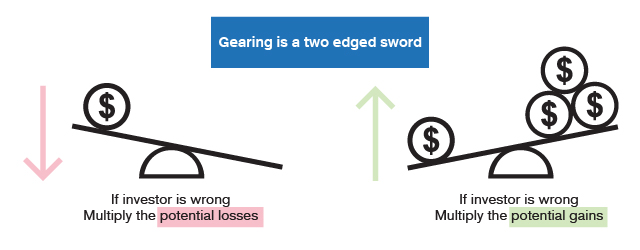Guide for Beginners

-
Why do warrants have leverage?
Imagine the following situation: one Tencent share is priced at approximately $300, but 1 Tencent warrant is priced at only $0.1 to $0.2. Investors can use $0.1 to $0.2 to track the performance of a stock valued $300. That relationship is leverage.
-
What is effective gearing?
Put simply, assuming all other factors remain unchanged, it is the movement in the warrant price when the price of the underlying assets is changed by 1%.
For example, when the Tencent stock price rises by 1%, for a Tencent call warrant with an effective gearing of 10x, the warrant price will, in theory, rise by 10%; for a Tencent put warrant with an effective gearing of 8x, the warrant price will, in theory, drop by 8%.
-
Which effective gearing should be selected, high or low?
In practice, warrants with high effective gearing are generally short-term and more out-of-the-money products; warrants with a low effective gearing are generally long-term and more at-the-money or in-the-money products.
Therefore, there is no one-size-fits-all criteria for selecting a high or low effective gearing, so it mainly depends on risk tolerance. Aggressive investors tend to select warrants with high effective gearing, while conservative investors prefer products with low effective gearing.

